|
|
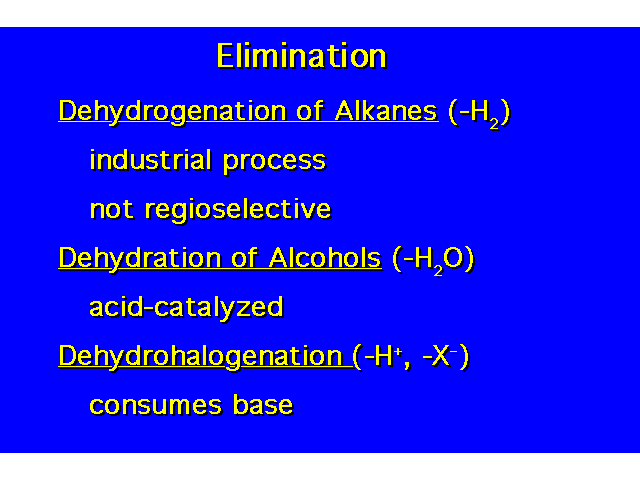 | |
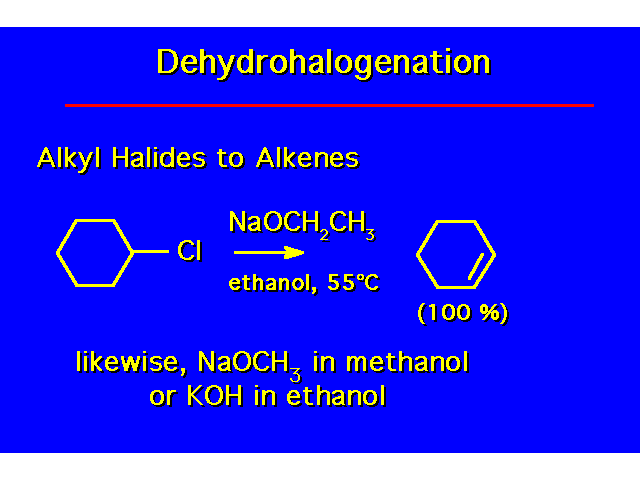 | |
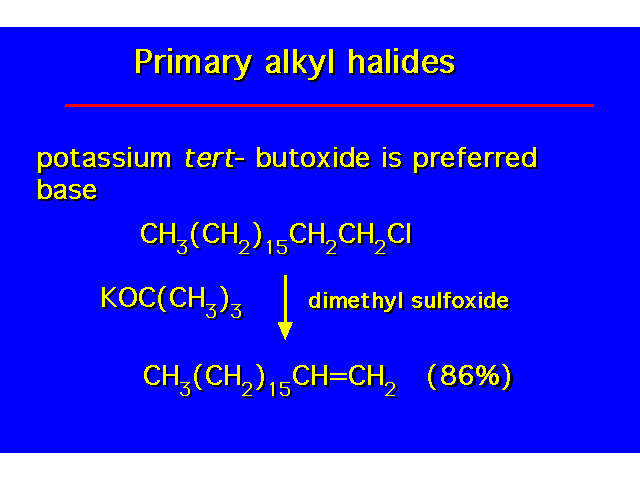 | |
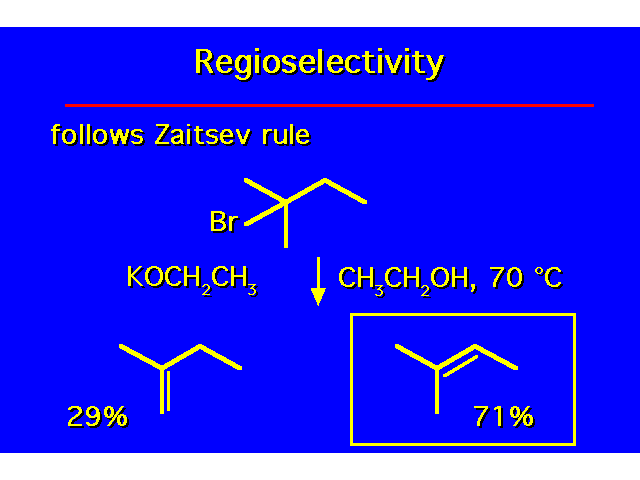 | |
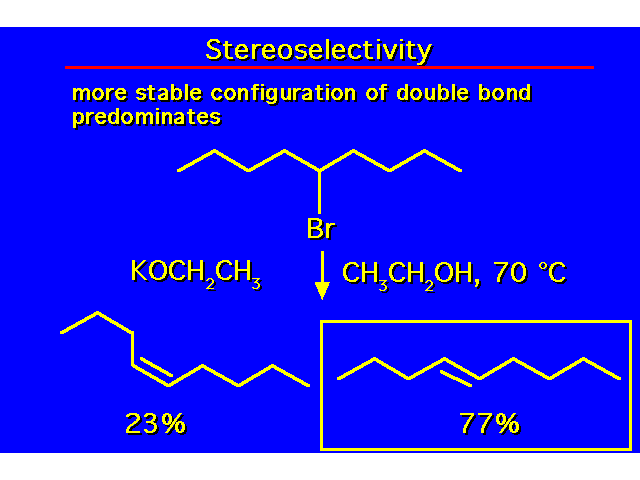 | |
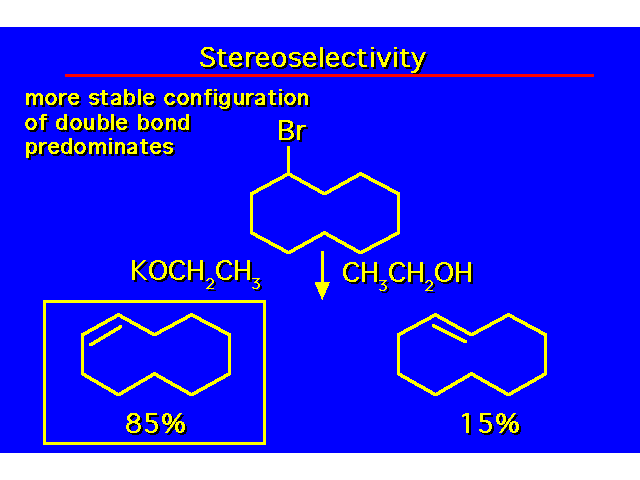 | |
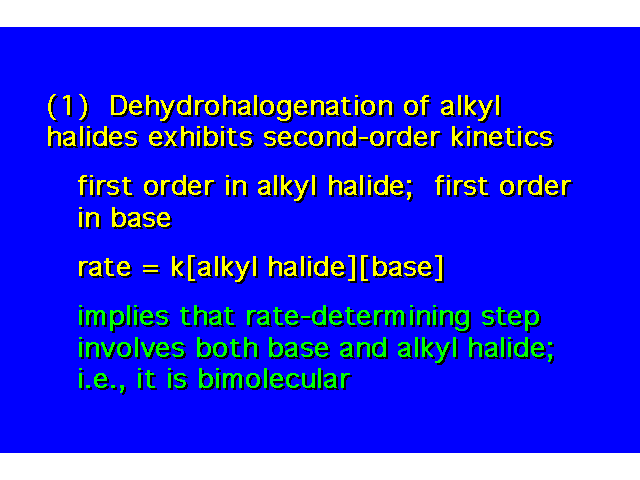 | |
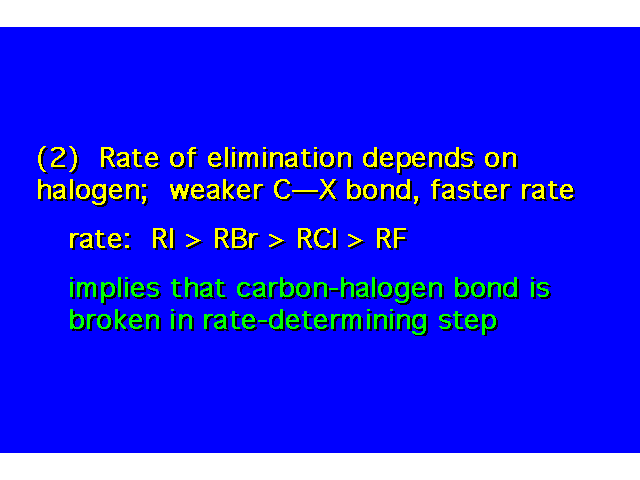 | |
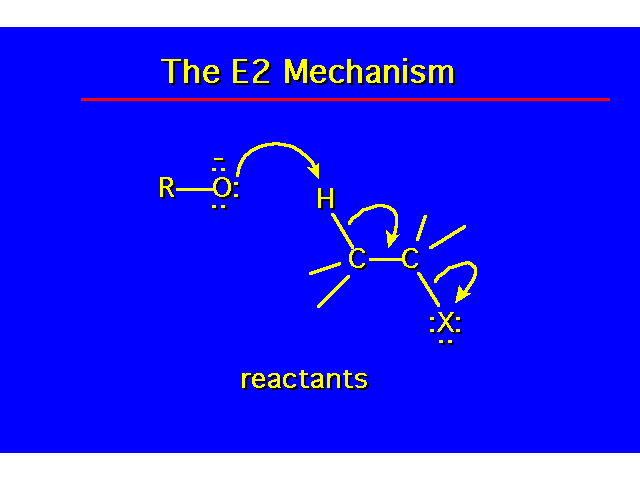 | |
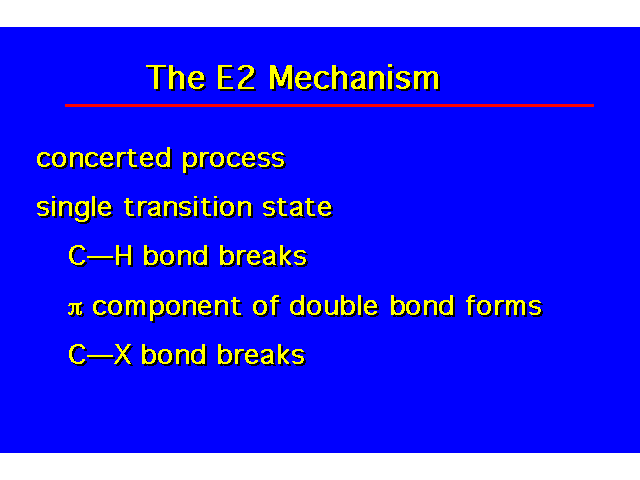 | 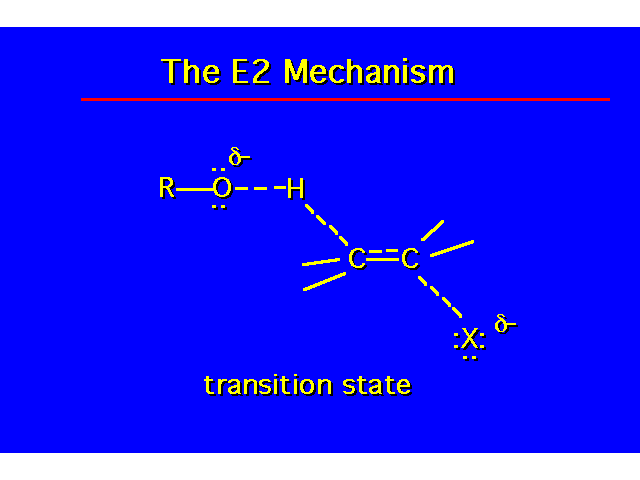 |
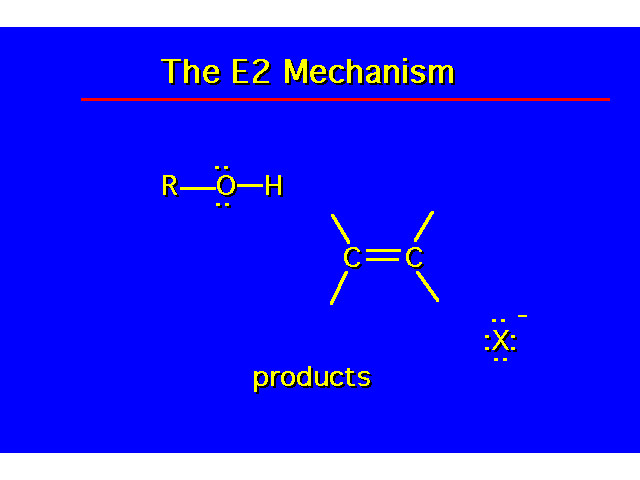 | |
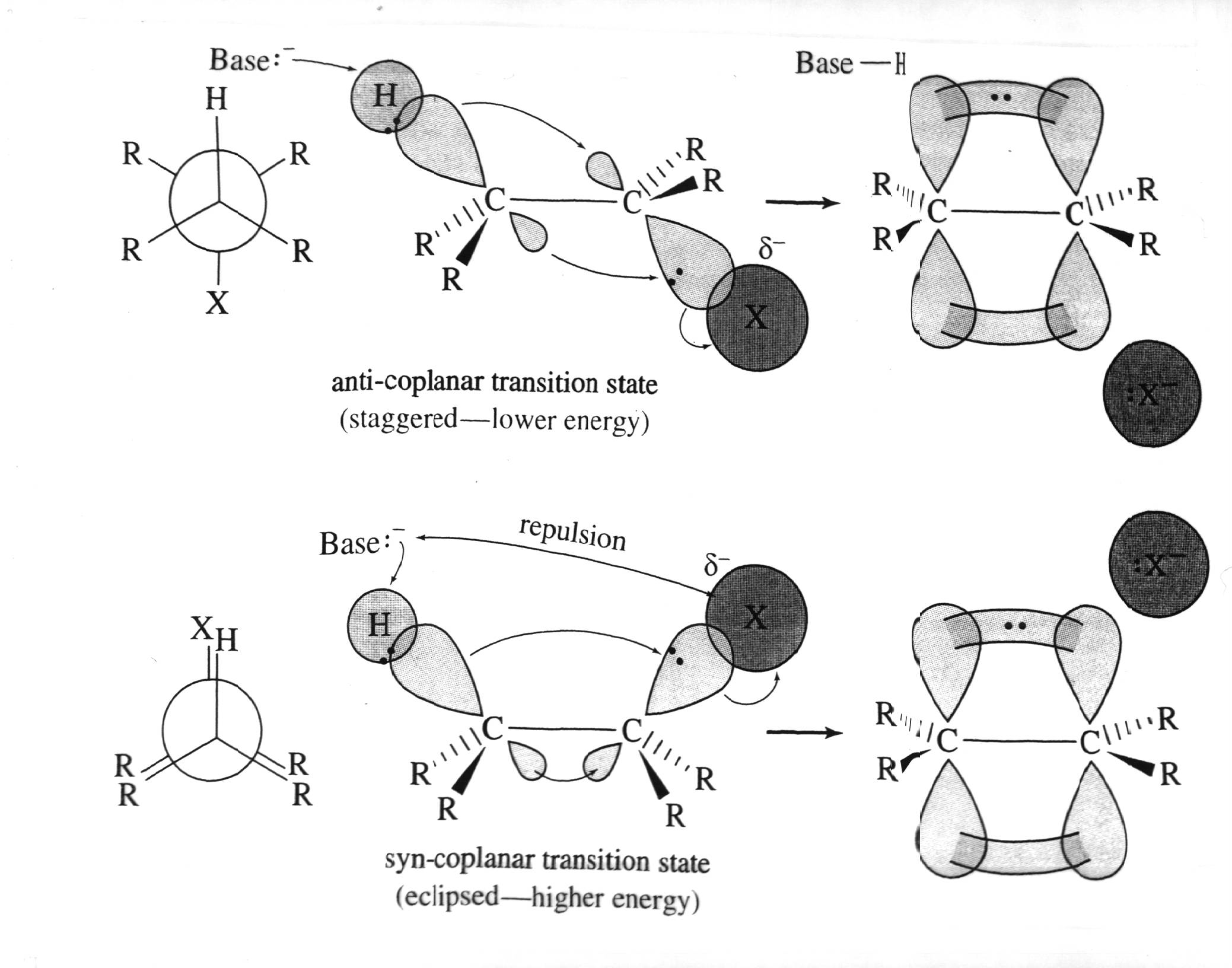 In the concerted reaction, the orbitals of the hydrogen atom and the halide must be aligned so that they can begin to form a pi bond in the transition state. All the atoms of the H-C-C-X unit need to be in the same plane (periplanar). This can occur when the H and X are synperiplanar or anti periplanar. In syn periplanar the adjacent bonds are eclipsed. In the antiperiplanar arrangement, the adjacent bonds are staggered (a lower energy arrangement). | 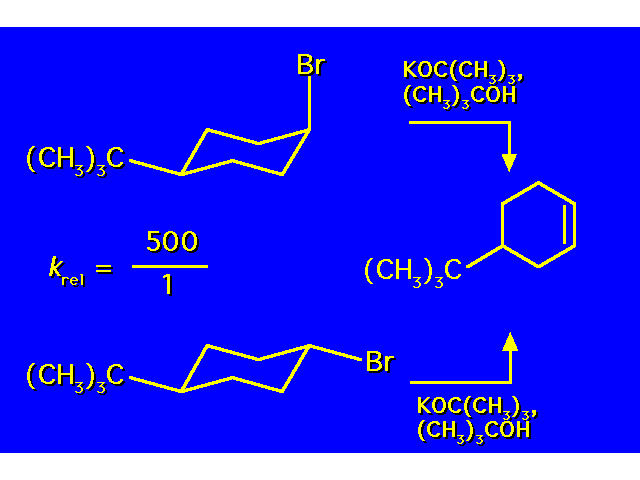 |
| In the cis compound, there is a hydrogen anti to the axial halide allowing anti elimination. In the trans compound, the equatorial halide is gauche to both hydrogens on the adjacent carbon, and anti elimination is not possible. |  |
| When the alkyl halide is tertiary, dehydrohalogenation can follow a two step process in which the C-halogen bond breaks first to give a carbocation intermediate, followed by deprotonation of the carbocation in a separate step. This is an E1 mechanism, and works for tertiary halides because tertiary carbocations are quite stable. Sometimes secondary alkyl halides will utilize an E1 pathway. In these reactions, the base that extracts the beta hydrogen is a molecule of the solvent. | 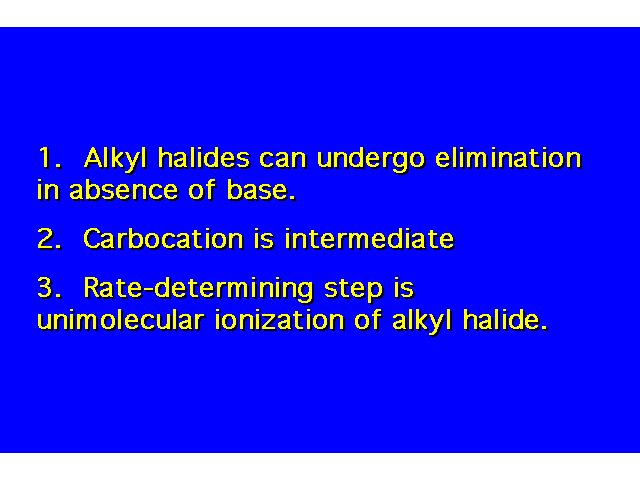 |
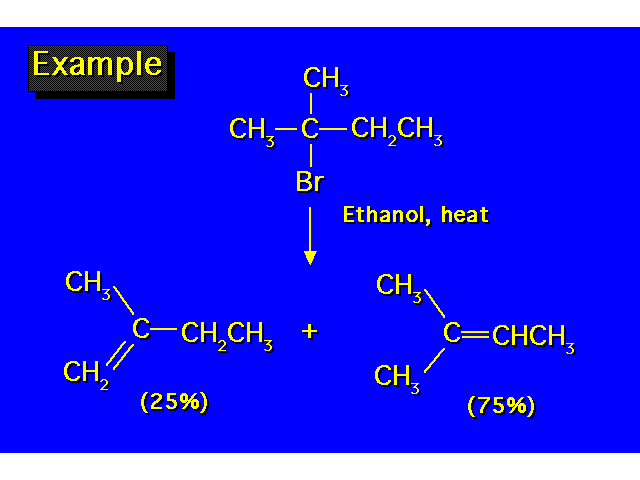 | |
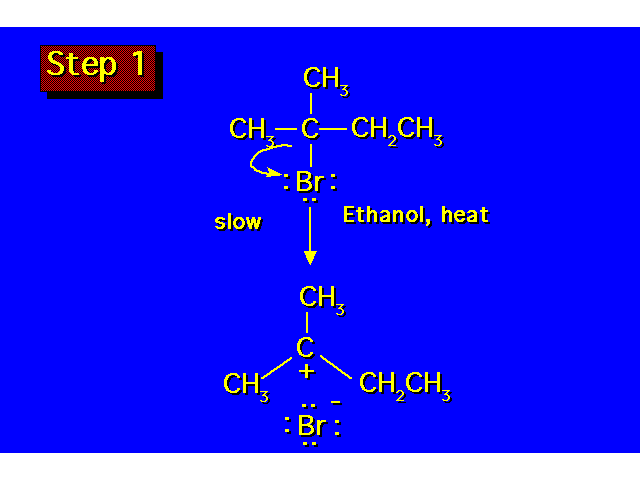 | |
| Like in SN1 processes, the carbocation intermediate may rearrange yielding an altered carbon skeleton. | 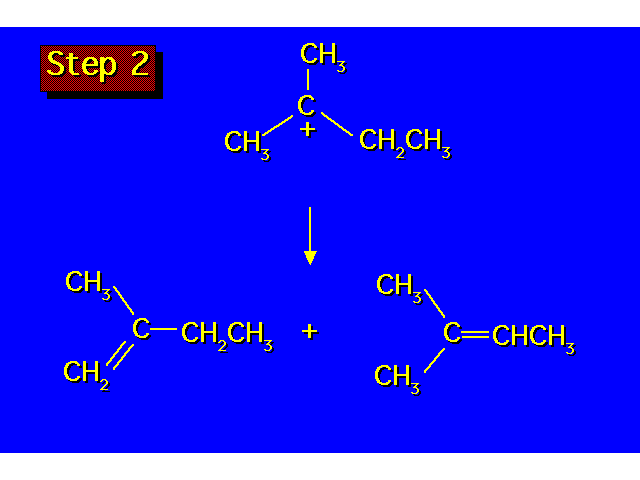 |
